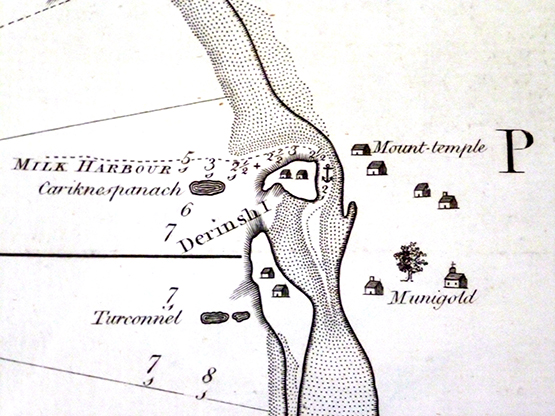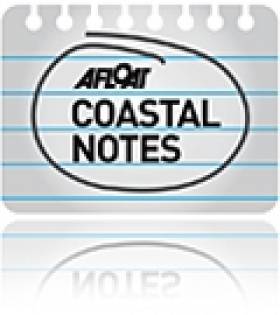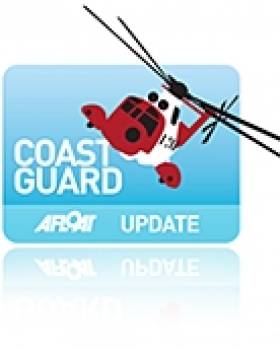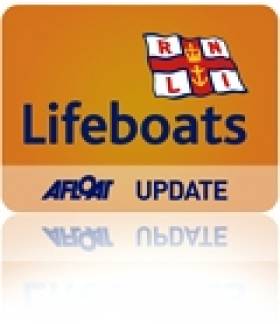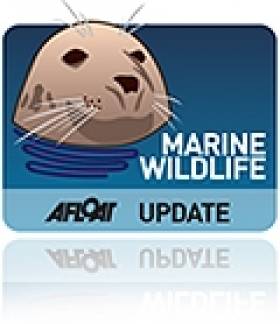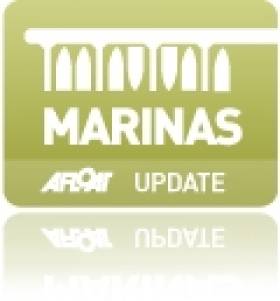Displaying items by tag: Sligo
Traditional Boatbuilders Of Historic Milk Harbour On Sligo Coast Provide Fascinating Lecture Topic
One of Ireland’s leading traditional boat authorities, Dr Criostoir Mac Carthaigh, editor of the monumental and authoritative Traditional Boats of Ireland (Collins Press 2008), is giving the Sligo Field Club’s monthly lecture on Friday November 20th. His topic will be the specialised skills and unique traditions of the boat-building and seafaring McCann family of the ancient natural port of Milk Harbour.
At Milk Harbour, which is the sheltered water behind Dernish Island on the sandy north Sligo coast midway between Grange and Cliffoney, the McCanns built – and continue to build, with Johnny and Tom McCann now at the heart of the business - boats for customers from a wide area, and the family are also noted for their ability to sail their boats in the exposed waters of the greater Donegal Bay area.
One of the more intriguing aspects of their work is that they may have been the most southerly constructors of clinker-built craft on Ireland’s west coast, so much so that anyone from Mayo or Galway who decided on clinker construction would have to make his way north to Milk Harbour.
Until proper piers were constructed at places like nearby Mullaghmore, Milk Harbour was the main trading port on the long stretch of exposed coastline between Sligo and Ballyshannon, and its importance was such that in 1776 the noted Scottish cartographer and master mariner Murdock McKenzie included a detailed plan of the entrance to Milk Harbour in his chart of the Donegal Bay area.
Milk Harbour as surveyed by Murdock McKenzie in 1776 – definitey not to be used for navigation in 2015……
The first noted seafaring McCann in the area was Johnny Rua McCann who, in the early 19th Century, made his living carrying cargo in his 28ft yawl from Killybegs to tiny ports on the Donegal and Sligo coasts. One of these was Milk Harbour – also known as Milk Haven - and it was there that the McCann clan eventually established their permanent base and set up a boat-building operation which continues to the present day.
And although Milk Harbour may have conceded the leading local harbour role to Mullaghmore, the place itself is a charming away-from-it-all spot with an anchorage much appreciated by discerning cruising visitors and locals alike.
The Lecture is at the Sligo Education Centre in the Institute of Technology Campus, Sligo, at 8.0pm on Friday November 20th. Any queries to Paul J Allen, Hon. Sec. Sligo Field Club, tel 085-7561024
Criostoir Mac Carthaigh at Kilrush aboard the “re-created” Shannon Hooker Sally O’Keeffe, ne of the many traditional Irish boat projects in which he has been involved. Photo: W M Nixon
Armada Wreckage Washed Onto Sligo Shore
#SpanishArmada - More wreckage from Spanish galleons shipwrecked off the northwest coast more than 400 years ago has been washed up on a Sligo beach.
And according to The Irish Times, it's possible that this weekend's low tides could expose even more remnants from the three vessels - sparking concerns for the integrity of the wreck sites, which lie in 15 metres of water some 60 metres from the low tide mark.
Donal Gilroy from the Grange and Armada Development Association (GADA) said the wooden objects found on the beach this week had "been buried off Streedagh for nearly 430 years. It is lucky they were not carried out by the tide.”
The find comes just months after a near fully intact rudder, believed to be from one of the 1588 fleet, was discovered at Streedagh beach by a local farmer.
“This is a protected site but we worry that these boats are being moved by storms," added Gilroy. "They have thrown up more in the last two years than in the previous 40."
The Irish Times has more on the story HERE.
Sligo Coastal Town's A Sweet Spot On The Wild Atlantic Way
#CoastalNotes - The Irish Independent's Kim Bielenberg recently enjoyed the hospitality of the welcoming coastal community of Strandhill in Co Sligo, where seaweed, surfing and sleeping under the stars are some of the key attractions.
Strandhill is just one of the many seaside hamlets dotted along the Wild Atlantic Way, an initiative local businesses have been swift to latch on to.
But the town's entrepreneurs have long been at one with the ocean and the rugged beauty of the coastline, from the local seaweed bath – a Sligo coast tradition – to the Kiwi-run surfing school and the beach campsite that welcomes hundreds of campers every summer.
Meanwhile, that same coastline provided the inspiration for artists Tom Phelan's seascape, which featured in a recently closed exhibition in Dublin.
Independent.ie has a sample of one of his striking and evocative surfboard paintings, with straight lines and sweeping curves that care calming and sedate, but a rough surfaces that indicates some tussles with the waves.
More of these works can be found on Tom Phelan's website HERE.
Top Award For Sligo Coastguard Chopper Crew
#Coastguard - Four members of Sligo's Irish Coast Guard helicopter crew are in Canada this week to receive a prestigious award for their efforts in the rescue of a climber from the Bluestack Mountains.
As The Irish Times reports, the four men - Capt Paul Forbes, co-pilot Paraic Slattery, winch operator John McCartney and winchman Conal McCarron - have been picked from a shortlist of 200 for the American Helicopter Society's Fredrick L Feinberg award in recognition of their daring rescue on 15 May last year in extremely difficult conditions.
On one of the final missions for the Sligo coastguard unit's Sikorsky S-61 helicopter, the crew hovered just feet from a sheer cliff face in total darkness and high winds to retrieve the climber, who had broken his leg.
It's not the first time the Rescue 118 crew have been lauded for their bravery on that day, as they've previously received an award from the helicopter's manufacturer.
The Irish Times has more on the story HERE.
Bundoran RNLI Assists Search for Overdue Boat off Sligo Bay
#rnli – Bundoran RNLI lifeboat was launched yesterday afternoon to assist in the search for a vessel which failed to return at its appointed time. The search was centred around the Streedagh area of County Sligo. Sligo Bay lifeboat was also launched to assist in the search in poor visibility conditions as were Killybegs coast Guard and the Sligo based Rescue 118 Helicopter.
Following a search of around 25 minutes, the overdue vessel was found grounded near Milk Harbour. The boat owner was airlifted to Sligo General Hospital and his condition is unknown.
Seven Seal Pups Released In Sligo
#MarineWildlife - The Irish Independent has a wonderful photo to accompany the video above of seven orphaned seal pups returned to the sea to rejoin their colony off Co Sligo after they were rescued and reared by the Dingle Wildlife and Seal Sanctuary.
All seven seals had been abandoned during the summer - at least one because its mother was scared off by reckless personal watercraft users.
That seventh seal, named Toby, was rescued from the dunes near Strandhill by the Walton family, to whom he became very attached. And the occasion seemed to get a bit much for him as he initially refused to leave the care of his human companions.
The Irish Independent has much more on the story HERE.
Open Day Success at Wicklow Lifeboat Station
#RNLI - A steady stream of people were welcomed by Wicklow RNLI at the lifeboat station's annual open day on Sunday 14 July.
Doors opened at 11am and the volunteer lifeboat crew was on hand to give tours of the station and its two lifeboats.
Activities included face painting and a joint display by Wicklow Fire and Ambulance Services. Garda, Customs and Civil Defence also put on displays throughout the afternoon, while the Irish Coast Guard helicopter flew over with the winch crew waving to the crowd below.
The final display was a simulated call-out of the inshore lifeboat. The three crew members onboard demonstrated how fast they could get into their lifeboat gear and launch.
The planned exercise involved a rescue to an injured sailor from a boat which was located in front of the crowd. The crew handed him over to a waiting ambulance.
Folk group Sheringham Shantymen travelled from Norfolk for the open day to see the station's inshore boat, which the group funded and which was named in their honour at a ceremony in 2007.
The Shantymen entertained the crowd with music and concluded the open day with a rendition of the lifeboat anthem, Home From The Sea.
Speaking after the event, Wicklow RNLI volunteer lifeboat press officer Tommy Dover said: "We have had a fantastic weekend with the Sheringham Shantymen. One of the highlights was the concert on Saturday night where the crew was invited to join the group on stage to sing Home From the Sea.
"The crew has a long association with the Shantymen and the lifeboat they funded has rescued 32 people to date at Wicklow."
Meanwhile, a successful sea safety roadshow was held at Sligo Bay RNLI during the weekend's Sea Shanty Festival.
Numerous lifejackets were checked with many having various faults such as corded cylinder, loose cylinder or out of date firing heads. Many people also sought advice about flares, anchors and VHF radios.
RNLI Sea Safety Roadshow adviser Joe Morr said: "It was a very successful weekend in Rosses Point and I hope to bring the roadshow back again next year."
Minke Whales Putting On A Show Off West Cork and Kerry
#MarineWildlife - The Irish Whale and Dolphin Group is reporting a "high volume of sightings" of minke whales - plus the odd fin whale - off the coasts of West Cork and Kerry as this week's heatwave continues to bask the country.
The first reports from the early part of the week showed a big increase of sightings and activity in the southwest region - but also off Mullaghmore, the popular surfing spot in Co Sligo, where as many as three minkes were spotted last weekend, and as far afield as Belfast Lough where several minke whales were photographed.
As the week progressed, the first confirmed sighting of a fin whale came in from Slea Head in Co Kerry in waters teeming with six minke whales and around 150 common dolphins.
And a whale watch trip of West Cork came into range of an amazing 12 minke whales, including a number of juveniles who seemed to make a game of swimming around the watchers' vessel.
The latest reports came in on Thursday from Baltimore and Clougher Head, which indicate that fin whales may be arriving here in big numbers. Here's hoping a few humpbacks will follow in their wake!
#Tourism - The world-class surfing hotspot of Sligo has failed to make the grade in Fáilte Ireland's long list of leading tourism towns for 2013, according to the Irish Independent.
The north-east county was among a surprise selection of areas known for their maritime and waterways attractions - such as Westmeath on the Shannon and Galway, host of last year's Volvo Ocean Race finale - that were not featured in the Irish tourism board's list of 45 towns and villages put forward for the Highly Commended Tourism Towns award, part of the National Tidy Towns Awards to be announced later in the year.
Counties on the water that did make the cut include Clare and Mayo, with five towns each on the list, Kerry with four - including last year's winner Portmagee - and Donegal and Waterford, represented three times each.
The top prize winner, to be announced by Fáilte Ireland in November, will receive €10,000 in supports for tourism marketing and development.
Though Sligo is conspicuous by its absence, Donegal's triple placing shows the north-east region is a big tourism attraction - and the Tripclocker blog says surfing is at the forefront of that.
With Ireland's exposure to the open Atlantic giving is "better waves more often", according to Killian O'Kelly of Bundoran's Turn n' Surf, there is a wide variety of surf beaches stretching from Donegal to Clare in particular with swells for all levels of experience.
Mullaghmore Pontoon. Yacht & Boat Berths in Sligo
Immediately inside Mullaghmore harbour in Donegal Bay is a new 20–metre pontoon provided primarily for embarking and disembarking and it is suitable for a range of plesure craft.


























